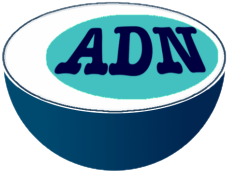Orateur
Summary
Cellular differentiation occurs during the development of multicellular organisms and leads to the formation of many different tissues where gene expression is modulated without modification of the genetic information. These modulations are in part encoded by chromatin-associated proteins or biochemical tags that are set down at the chromatin level directly on DNA or on histone tails. These markers are directly or indirectly involved in the local organization and structure of the chromatin fiber, and therefore may modulate the accessibility of DNA to transcription factors or enzymatic complexes, playing a fundamental role in the transcriptional regulation of gene expression. Statistical analysis of the repartition of this epigenomic information along the chromosomes have shown that genomes of higher eukaryotes are linearly partitioned into domains of functionally distinct chromatin states. In particular, experimental evidence has shown that the pattern of chromatin markers along chromosomes is strongly correlated with the 3D chromatin organization inside the nucleus. This suggests a coupling between epigenomic information and large-scale chromatin structure that could statistically quantified. Recently, using polymer physics and numerical simulations, we showed that attractive interactions between loci of the same chromatin state might be the driving forces of the folding of chromatin inside the nucleus. In this study, we assumed that the epigenomic information pre-exists to the 3D organization. However, increasing number of experimental results suggests that chromatin marks are themselves highly dynamic during cell cycle or developmental stages and that 3D organization of chromatin might play a key role in the stabilization and function of chromatin markers. We will describe our efforts to better understand the dynamical crosstalk between the epigenome and the 3D organization and we will illustrate the modularity of our framework in several biological contexts. In particular, we show that epigenomic-driven contacts and the formation of interacting compartments coupled to a reader-writer mechanism of epigenetic maintenance lead to a better and more robust control of epigenome, suggesting that 3D organization of chromosome plays a functional role at the epigenetic regulation level.

